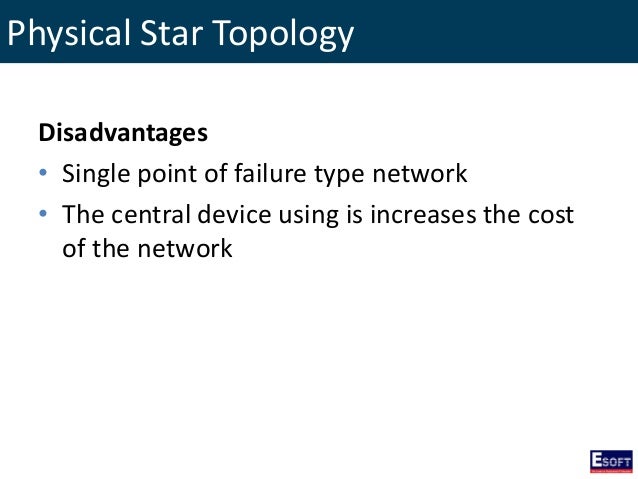Star Topology Cost
A star topology is a network topology in which all the network nodes are individually connected to a central switch, hub or computer which acts as a central point of communication to pass on the messages. A Cost Effective Topology Migration Path Towards Fibre. Frank Phillipson. TNO, Delft, the Netherlands. Email: frank.phillipson@tno.nl Abstract— If. An operator has as starting position a Full Copper topology in which ADSL or VDSL is offered from the Central Office, the next choice he has to make is to provide Full FttH or use another topology option, e.g. Cost Of The Software In Star Topology. Open My ConceptDraw Account and Download ConceptDraw Software Free. Buy ConceptDraw Office Software. Open My ConceptDraw Account and Download ConceptDraw Software Free. Learn More About ConceptDraw Office Software. This means that star topology can be limiting at times because there are circumstances in which the central hub can be broken. Additionally, though it may be easy to repair the network, the cost of doing so may be high.
Star Topology
• The routing in the star topology is done with the help of the star coupler. Conversely, mesh topology directly transmits the data from one node to another using a point-to-point link. Advantages of the Star Topology • It reduces the transferring of the packets from the excessive number of nodes.

New devices or nodes can easily be added to the Star Network by just extending a cable from the hub. Since the hub controls everything the addition or removal of devices are done using g the hub. If the hub adds a device for example a printer or a fax machine, all the other computers on the network can access the new device by simply accessing the hub. Unearth the oncoming storm zip. The device need not be installed on all the computers in the network. The central function is cost effective and easier to maintain.
Benefits of Bus topology Bus topology has the following advantage: • Cabling costs are minimized because of the common trunk. Disadvantages of Bus topology Disadvantages of bus topology are as follows: • Difficult to trouble shoot because no central distribution points exist. • Cable breaks can disable the entire segment because they remove the required termination from each of the two cable fragments. Examples of Bus topology The following networks are examples of bus topology: • ARCnet, (Token bus) • Ethernet, (10Base2) Communication schemes are those methods used by various types of local area networks for transferring data from one point to another.
Star Topology Network
A well constructed mast can sometimes cost more than the router itself. Here is a small guide we put together about the various options: 4: Internet Bandwidth If you plan to provide internet gateways for free internet access, consider that the more people using the mesh network, the more gateways you will need to maintain decent speeds for users. You and those who share the network may consider pooling together to purchase bandwidth for some of the buildings that host routers. 5: Maintenance and Upgrades An external router has about a five year lifetime. You will also want to replace the Ethernet cable and check the rooftop mountings when you replace the router to make sure that everything can last until the next full hardware upgrade.
Network media Network media provides connectivity between two systems. There are two primary types of network media; wireless media and cable media. In Wireless media radio spectrums are used to connect the systems. In cable media, a cable is used to connect the systems. There are three primary types of cable which are mainly used in computer network; coaxial cable, twisted-pair cable and fiber optic cable. Coaxial cable This cable is mainly used in bus topology.
Star Topology Cons
Networks - LAN topologies 5.3.4 Revision points: (Full course) Candidates should be able to: • describe different network topologies, identifying briefly the relative advantages of each such as,,; LAN Network topologies: Network topology is the name given to the way in which the devices ( called nodes) are physically connected in a network. There are three common network topologies, called,.
The linear bus network uses shorter lengths of cable. • Future growth. With a star topology, expanding a network is easily done by adding another concentrator. • C able type.
• Hub failures can disable large segments of the network. Examples of Star topology The following types of networks are examples of star topologies: • ARCnet • 10Base-T, 100Base-TX • StarLAN Token Ring also is wired in a physical star. However, as you will learn later in this lesson, the physical wiring and the logical characteristics of Token Ring are quite different.
[ ] Two other hybrid network types are hybrid mesh and hierarchical star. Daisy chain [ ] Except for star-based networks, the easiest way to add more computers into a network is by, or connecting each computer in series to the next.